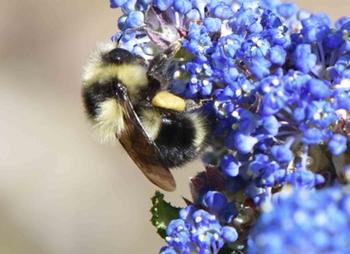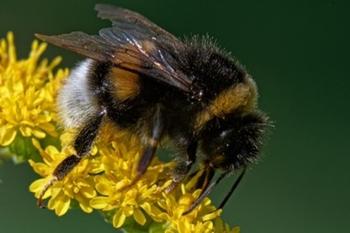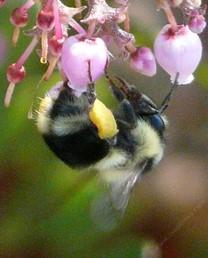Behold the buzzy bumble bee

Bumble bees are buzz pollinators
Like other native bees, bumble bees can grab onto a flower and move their flight muscles so rapidly that the vibration to the flower's anthers causes pollen to be dislodged. This is called buzz pollination. About 6 percent of flowering plants need buzz pollination. Bumble bees provide this service to many agricultural crops, including tomatoes, cherries, apples, avocados, alfalfa, blueberries, and blackberries. Unfortunately, honeybees are unable to buzz pollinate.

Watch buzz pollination in action.
Decline in bumble bee populations
There are 40 bumble bee species in North America, and 26 are in California. The California bumble bee was the most common bumble bee in California until the 1990s when populations declined. There are many factors that may have contributed to this decline, including pesticides, loss of habitat, invasive species, and climate change.
Life cycle of a bumble bee
At the end of summer, queen bumble bees and all her workers and male offspring die and only the fertilized queens, called gynes, survive to hibernate through winter. Come spring, these survivors find a cavity to build new nests. Sometimes these nests are above ground in hollow trees or abandoned bird nests, but they are typically underground. Abandoned rodent holes are particularly attractive because the space is warm and lined with fur.

Want to help a bumble bee? Plant manzanita.
Bumble bee queens must have access to food sources in late winter and early spring when they come out of hibernation. Without that and/or the ability to find a nest, they can't build colonies. One of the first plants used by these hard-working bees are California's beautiful manzanitas. There are over 100 species of manzanita (Arctostaphylos), from ground-huggers to trees. They are evergreen and often have attractive bark. Here's where you can find a manzanita that's right for your garden.
